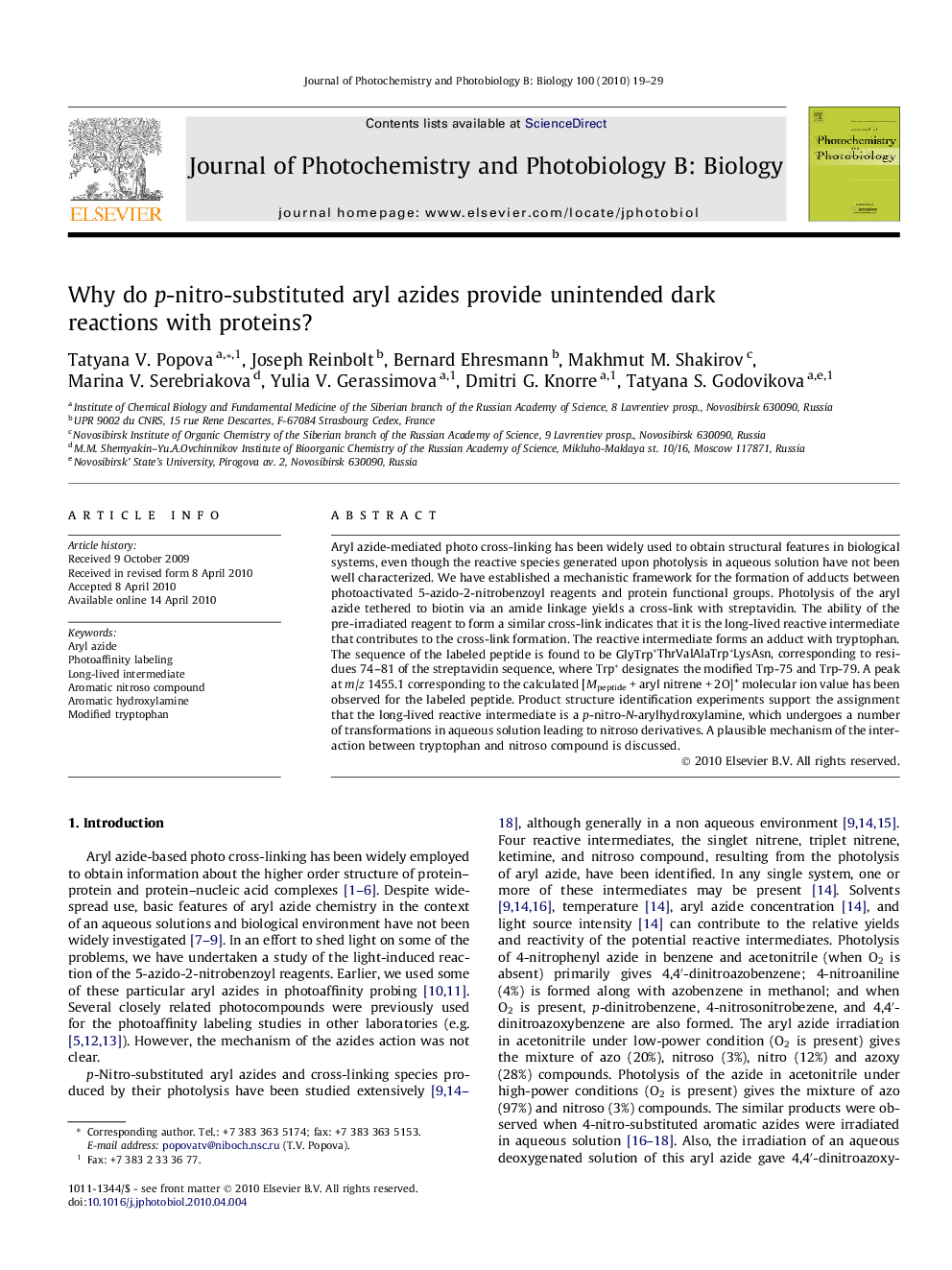| کد مقاله | کد نشریه | سال انتشار | مقاله انگلیسی | نسخه تمام متن |
|---|---|---|---|---|
| 30991 | 44524 | 2010 | 11 صفحه PDF | دانلود رایگان |

Aryl azide-mediated photo cross-linking has been widely used to obtain structural features in biological systems, even though the reactive species generated upon photolysis in aqueous solution have not been well characterized. We have established a mechanistic framework for the formation of adducts between photoactivated 5-azido-2-nitrobenzoyl reagents and protein functional groups. Photolysis of the aryl azide tethered to biotin via an amide linkage yields a cross-link with streptavidin. The ability of the pre-irradiated reagent to form a similar cross-link indicates that it is the long-lived reactive intermediate that contributes to the cross-link formation. The reactive intermediate forms an adduct with tryptophan. The sequence of the labeled peptide is found to be GlyTrp*ThrValAlaTrp*LysAsn, corresponding to residues 74–81 of the streptavidin sequence, where Trp* designates the modified Trp-75 and Trp-79. A peak at m/z 1455.1 corresponding to the calculated [Mpeptide + aryl nitrene + 2O]+ molecular ion value has been observed for the labeled peptide. Product structure identification experiments support the assignment that the long-lived reactive intermediate is a p-nitro-N-arylhydroxylamine, which undergoes a number of transformations in aqueous solution leading to nitroso derivatives. A plausible mechanism of the interaction between tryptophan and nitroso compound is discussed.
Journal: Journal of Photochemistry and Photobiology B: Biology - Volume 100, Issue 1, 2 July 2010, Pages 19–29